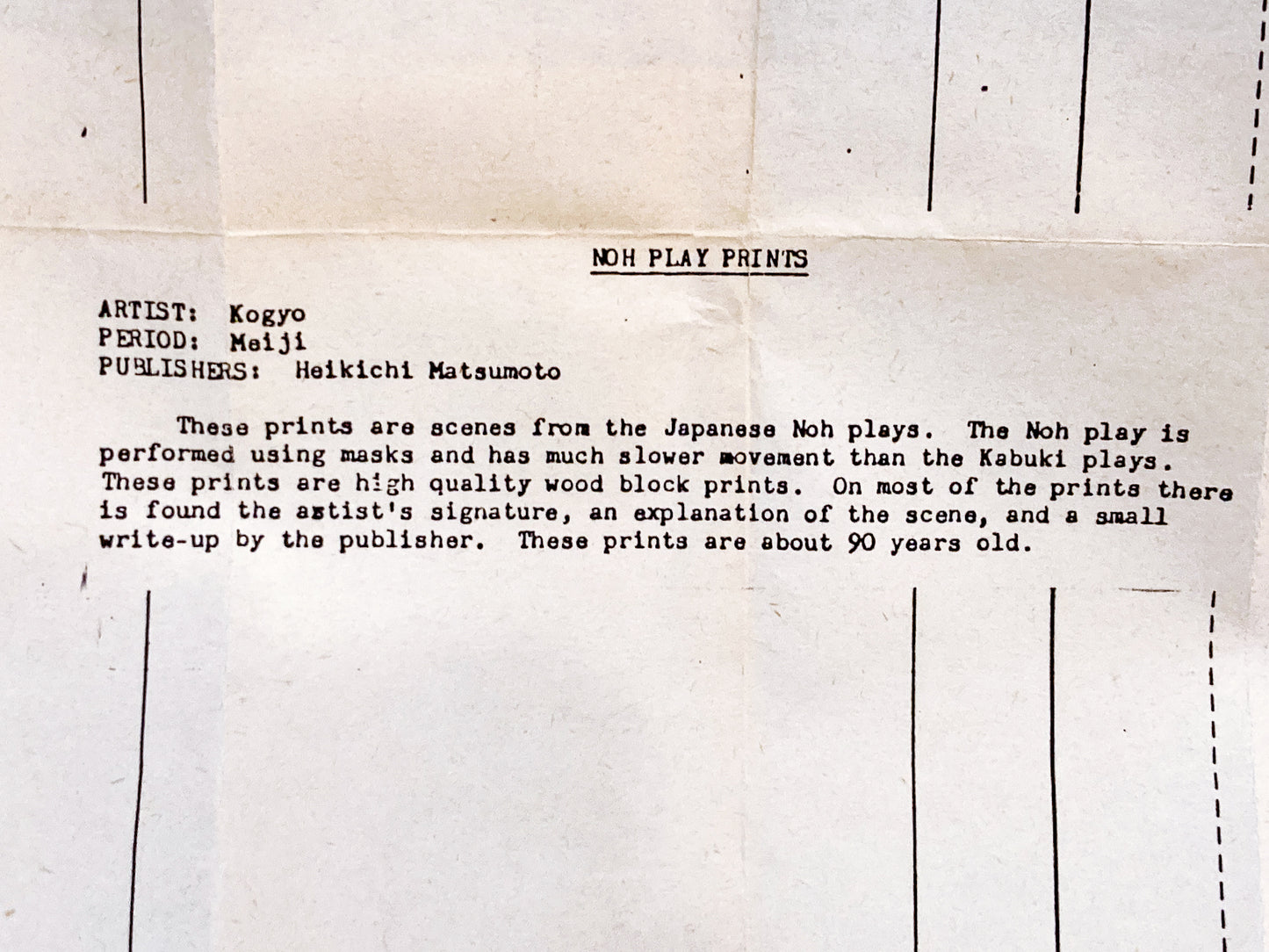Mitchell Sotka
Tsukioka Kogyo (1869-1927) Arashiyama: The God of Mt. Arashi Framed Woodblock Print
Tsukioka Kogyo (1869-1927) Arashiyama: The God of Mt. Arashi Framed Woodblock Print
Couldn't load pickup availability
Share
If you enjoy theater, you may enjoy the works of Japanese Artist, Tsukioka Kogyo (1869-1927). Kogyo's woodblock prints captured the performance art of Noh, a dance-drama performed since the 14th Century. Masks, elaborate costumes, expressive movements, and traditional tales continue to captivate audiences today. Depicted in this print is a scene from the Spring play, Arashiyama where the gods protect the mountain's Cherry Blossoms. Spark conversation in any room with this framed artwork!
Collector's Notes:
Antique Tsukioka Kogyo (1869-1927) Arashiyama: The God of Mt. Arashi Framed Woodblock Print; signed on lower right side. Likely printed in 1898, as noted by the same print in the Smithsonian's National Museum of Asian Art collections.
Condition: Excellent
Expected wear for age; Not inspected outside of frame. Frame shows some wear. Inspect images and video.
Overall Size: 15" x 19" x 1"
Tsukioka Kogyo, Japanese (1869-1927)
Kogyo was a woodblock print artist, painter, and illustrator who brought the theatrical art of noh to life through rich, painterly colors and shimmering costumes. While he is best known for scenes of the noh stage, he also produced some war prints and nature studies. Born in Tokyo in 1869 as Hanyu (Sakamaki) Bennosuke (sometimes read Sadanosuke), Kogyo was the son of an innkeeper in the Nihonbashi district. This framed woodblock print depicts the Spring Noh play, Arashi-yama which celebrates a story where the gods protect the cherry blossoms of Mount Arashiyama from the wind. In the center is the Great God and protector of the "Stormy Mountain", God of Mt. Arashi. Another God, Komori, and Goddess, Katsute from Yoshino accompany him on this mission.
On the back of this print is an envelope with a document that describes this high-quality Japanese woodblock print by the artist Tsukioka Kogyo (1869-1927) from the Meiji period (1868-1912), published by Heikichi Matsumoto. This print depicts a scene from Noh plays, a traditional Japanese performing art that uses masks and has slower movements than Kabuki plays. The text notes that each print typically includes the artist's signature, an explanation of the scene, and a publisher's write-up, and that the prints were about 90 years old at the printing of the undated receipt.
Kogyo's interest in noh theater first began in his late 20s. At this time, the traditional theatrical art was actively redefining itself for the modern era. Shaking off its aristocratic associations, Noh expanded its audience, both to the greater public in Japan and internationally, through the visits of foreign dignitaries. As the audience of noh grew, Kogyo broke new ground in the depiction of noh subjects. Rather than foregrounding the actors’ personas, Kogyo creates a subtle sense of the stage and set to capture the fleeting moments of a live performance. By the time of Kogyo’s death in 1927, noh theater had secured a significant standing in popular culture.
www.roningallery.com/artists/Kogyo
https://www.the-noh.com/en/plays/data/program_068.html
https://asia.si.edu/explore-art-culture/collections/search/edanmdm:fsg_S2003.8.2902/







































